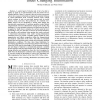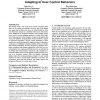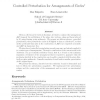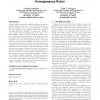66 search results - page 13 / 14 » Motion planning in urban environments: Part I |
AROBOTS
2007
13 years 5 months ago
2007
— A central goal of robotics and AI is to be able to deploy an agent to act autonomously in the real world over an extended period of time. To operate in the real world, autonomo...
IUI
2004
ACM
13 years 10 months ago
2004
ACM
The WALK mode is one of the most common navigation interfaces for 3D virtual environments. However, due to the limited view angle and low frame rate, users are often blocked by ob...
COMPGEOM
2003
ACM
13 years 10 months ago
2003
ACM
Given a collection C of circles in the plane, we wish to construct the arrangement A(C) (namely the subdivision of the plane into vertices, edges and faces induced by C) using fl...
GECCO
2009
Springer
13 years 11 months ago
2009
Springer
A central tenet of embodied artificial intelligence is that intelligent behavior arises out of the coupled dynamics between an agent’s body, brain and environment. It follows t...
WACV
2005
IEEE
13 years 10 months ago
2005
IEEE
— This paper describes a new method to improve inertial navigation using feature-based constraints from one or more video cameras. The proposed method lengthens the period of tim...




